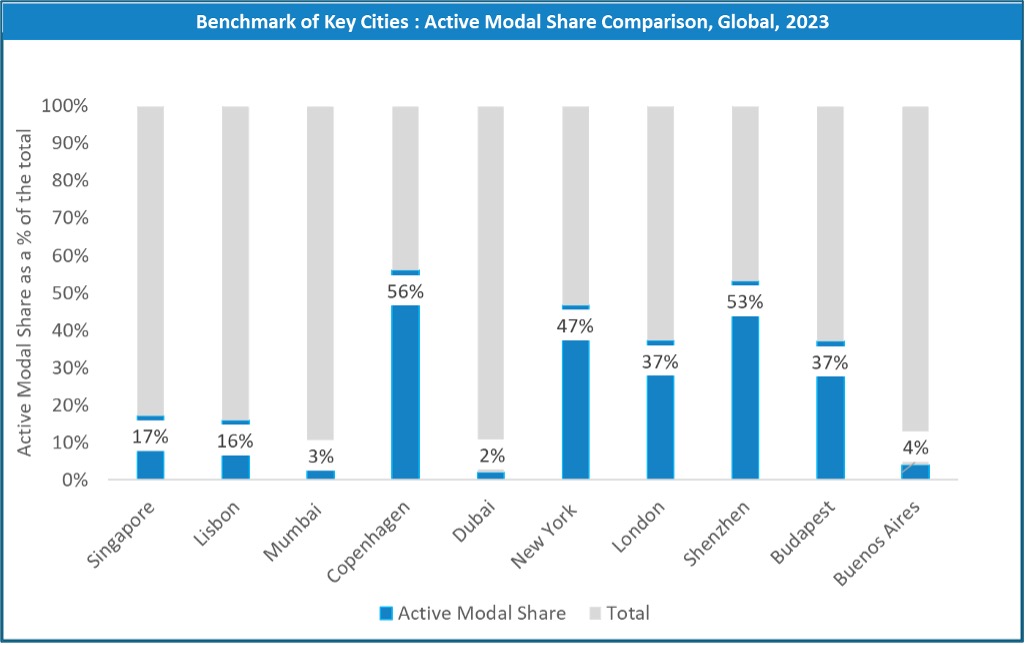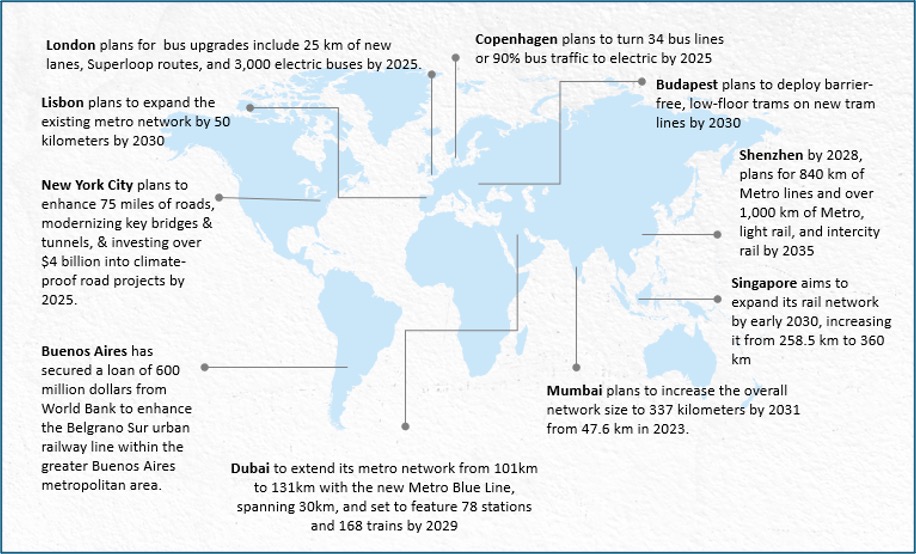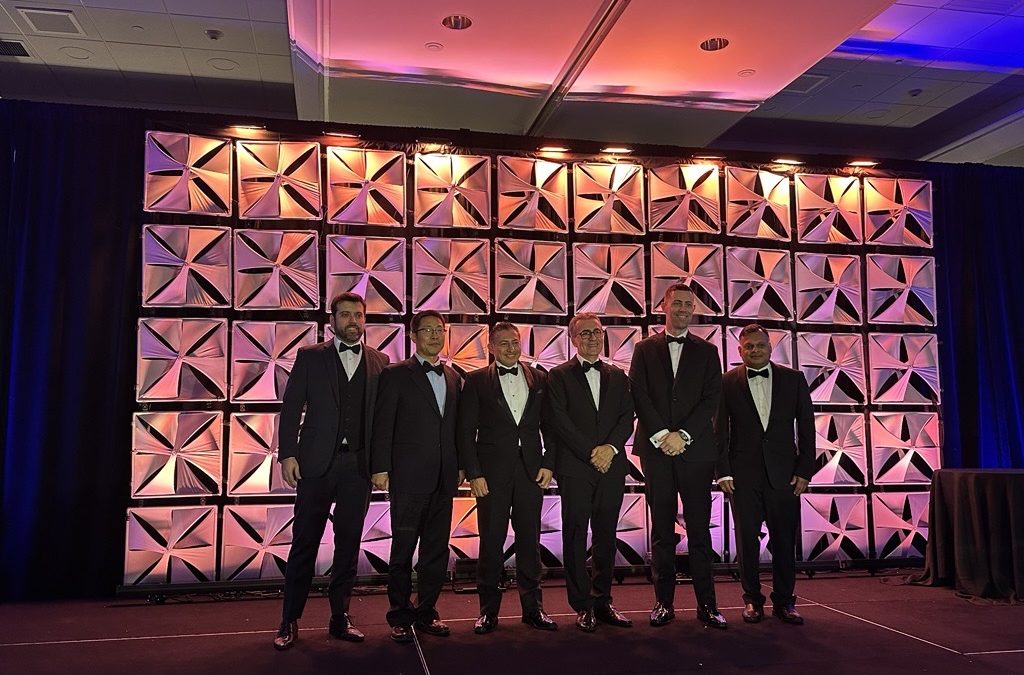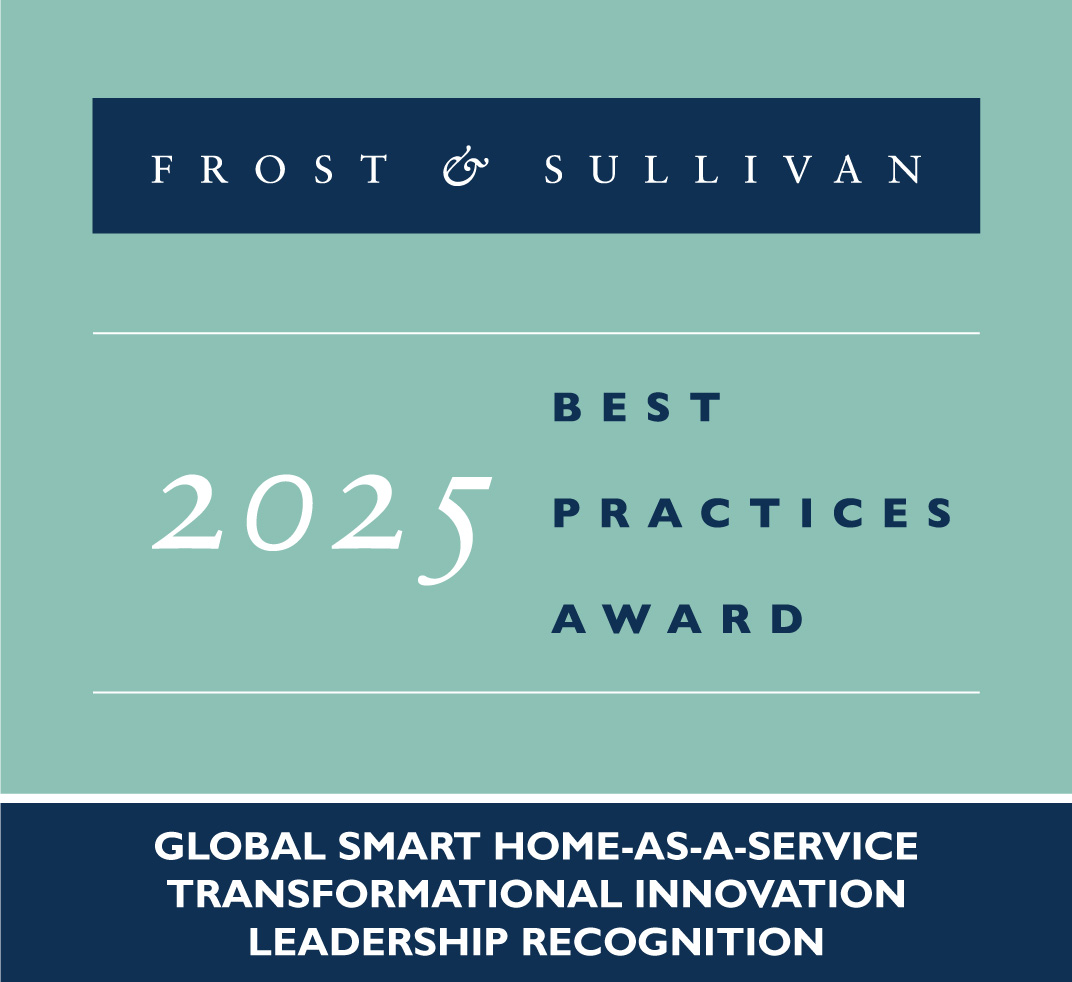Frost & Sullivan benchmarks the transport strategies of key global cities, highlighting the need for continuous investments, public-private partnerships, and technology-driven efficiency improvements.
The cities of tomorrow are being shaped today through strategic transport solutions that prioritize sustainability, efficiency, and digital integration. In response to rapid urbanization, congestion, and climate change concerns, leading cities worldwide are focusing on key trends such as achieving net zero emissions, urban regeneration, and digital connectivity. These trends are underpinning the evolution of integrated transport systems, where multiple modes work together to enhance mobility and reduce environmental impact.
With sustainability and electrification taking center stage, cities are embracing technology to streamline traffic flows, lower carbon emissions, and improve overall user experience. Investments in renewable energy for public transport, electric vehicle (EV) adoption, and improved multimodal connectivity are defining the next generation of urban transport strategies.
To learn more, please see: Benchmarking of Key Cities and Their Transport Development Strategies, The Evolution from Mobility-as-a-Service to Mobility-as-a-Feature, or contact sathyanarayanak@frost.com for information on a private briefing
The Shift Toward Sustainable Mobility
Many global cities are making concerted efforts to shift away from car dependency toward greener, shared, and electrified transport solutions. Accordingly, investments in reliable public transportation networks, policies promoting active transport, and awareness campaigns encouraging sustainable commuting habits are spurring sustainable urban mobility. In parallel, cities are increasingly discouraging private vehicle use through congestion pricing, parking restrictions, and strict vehicle emissions regulations.
Innovative urban planning is also playing a crucial role in reducing the need for car travel. High density, mixed use developments are improving accessibility, enabling residents to live, work, and shop without requiring long distance commutes. Simultaneously, expanding pedestrian-friendly infrastructure, implementing car-free zones, and providing seamless first- and last-mile connectivity are helping cities make sustainable transport more attractive and viable.
Notwithstanding such advances, several challenges remain. A strong car culture in some cities is slowing down the shift to public transit and active transport modes. High initial costs associated with new transport infrastructure—such as metro lines and cycling networks—are also posing a barrier. Furthermore, technological limitations, particularly in battery technology for electric buses and charging infrastructure, threaten the long-term feasibility of electrified, green transport alternatives.
Benchmarking Leading Cities in Sustainable Transport
To better understand how different cities are addressing sustainable transport challenges, Frost & Sullivan conducted a study of ten global cities. These cities—Mumbai, Copenhagen, Dubai, New York, Singapore, Lisbon, London, Shenzhen, Budapest, and Buenos Aires—were selected from a larger list of 60 cities on the “Smart City Tracker” data platform. These cities were selected for more in-depth examination, based on their progress in public transport adoption and sustainable mobility initiatives.
Each city has taken a unique approach to improving its transport landscape. For example, Copenhagen and Shenzhen have high active modal shares of 56% and 53%, respectively, thanks to high density, mixed use, pedestrian-friendly urban environments. In Copenhagen, over 50% of commuters use bicycles due to the city’s excellent cycling infrastructure with well-maintained, segregated bike lanes.
*Active modal share refers to walking, cycling and public transport modal share Source: Frost & Sullivan
In terms of public transport, Buenos Aires has a nearly 80% public transport modal share, supported by an extensive network of buses and trains alongside policies that discourage car use. Dubai, on the other hand, faces a challenge with its historically car-centric infrastructure. To address low public transport modal share, the city is actively working to shift travel behavior through investments in metro expansion and smart mobility solutions.
Electrification and Infrastructure Expansion are Priorities
Electrification is a priority for many cities aiming to achieve carbon neutrality in transport. Shenzhen has a fully electrified public transport fleet, while London is on track to operate an entirely zero-emission bus network by 2037. Such initiatives not only reduce greenhouse gas emissions but also lower air pollution and operational costs in the long run.
Infrastructure expansion remains another critical focus area. Cities are investing in metro and rail networks to enhance accessibility and reduce reliance on private vehicles. Shenzhen plans to expand its metro network to 840 km by 2028, with over 1,000 km of combined metro, light rail, and intercity rail by 2035. London’s bus network upgrades include 25 km of new lanes and 3,000 electric buses by 2025.
Source: Frost & Sullivan
While such initiatives are promising, maintaining and upgrading aging public transport infrastructure poses significant financial and logistical obstacles. Cities like Budapest struggle with outdated rail systems that have not seen major upgrades in decades. Meanwhile, Singapore faces maintenance and capacity challenges in its MRT network, while New York’s MTA continues to grapple with financial constraints and high congestion levels that disincentivize bus use.
Our Perspective
Cities leading in transport development share common characteristics: forward-thinking policies, technological innovation, and strong public-private collaboration. To maintain the forward momentum, cities will need to adopt a twin track approach: simultaneously improving existing transport infrastructure while investing in long-term expansion.
Improving current infrastructure will involve deploying intelligent traffic management systems, real-time public transport tracking, and dynamic pricing for parking and transit services. Cities can also enhance first- and last-mile connectivity through better integration of different transport modes, ensuring seamless travel experiences for commuters.
Investing in new infrastructure will be equally crucial. Public transport expansion will need to be prioritized through increased funding, policy incentives, and collaboration between governments and private operators. Cities will need to improve service reliability, frequency, and affordability to attract more riders to public transit. Complementary mobility solutions such as ridesharing and bikesharing will further enhance accessibility.
Sustainable urban development will need to be made a central component of transport planning. Here, cities need to create urban environments that support walking, cycling, and public transit over car usage. Expanding EV infrastructure, establishing low-emission and zero-emission zones, and developing green corridors will provide a foundation for more sustainable transport practices.
Ultimately, cities that proactively embrace electrification, multimodal integration, and smart technology strategies will be better positioned to achieve sustainable transport and enhance the overall mobility experience.
With inputs from Amrita Shetty, Senior Manager, Communications & Content – Mobility







